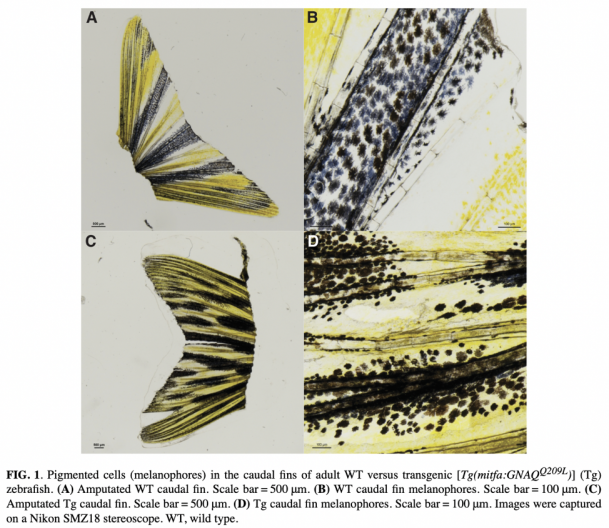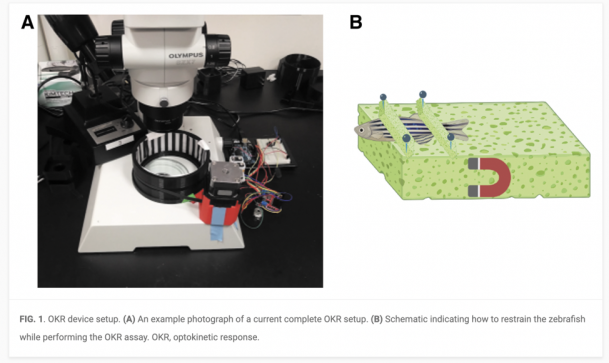
Prof. Andrea Henle and Prof. Steve Henle publish articles in Zebrafish in Education
Professor Andrea Henle and Professor Steve Henle recently published peer-reviewed articles in the journal Zebrafish for the Special Issue: Zebrafish in Education.
Prof. Henle’s article was titled: “Development of an Undergraduate Cell Biology Laboratory to Assess Pigmentation and Cell Size in a Zebrafish Model of Uveal Melanoma.” The article outlined a cancer biology laboratory experience that was developed for undergraduate students in two courses: Cell and Molecular Biology and Advanced Cell Biology. Hundreds of students conducted authentic cancer research using the zebrafish model organism over the past nine years through this laboratory experience. The basic biological results of the students’ research on uveal melanoma and their achieved learning outcomes are reported in the study. Other undergraduate educators will now be able to adopt this research experience in their courses with the information and lab manual provided through this article.

Prof. Steve Henle’s article was titled, “A 3D-Printed and Freely Available Device to Measure the Zebrafish Optokinetic Response Before and After Injury.” This article outlined the development of an inexpensive device to measure zebrafish. The device was used to show recovery of vision after damage to the zebrafish optic nerve. Six former and current Carthage students are authors on the study. The hope is that this device can enable professors to incorporate studies of zebrafish vision into their undergraduate-level courses, as planned by Prof. Henle.

The zebrafish facility at Carthage has been operational since 2015 and provides Carthage students with opportunities to conduct both translational and basic biology and neuroscience research with an animal model.
Sponsoring Department, Office, or Organization:
Division of Natural and Social Sciences
